From the title, you might think I’m talking about the current waiting time for a Toyota Raize unit but this is different. See, Toyota was one of the first to introduce a crossover here in the Philippines with the RAV-4 in the late 90s. It got bigger and more expensive as time went on and by the 2010s, it’s far from ‘attainable’.
A second wave of crossover craze hit the country when the first-gen Ford EcoSport arrived. A third wave came when crossovers from China got into the country around 2018. In (a delayed) response, Toyota finally brought the Corolla Cross in 2020. It’s a smaller compact crossover and more affordable than the RAV-4 but it’s still not a volume seller, thanks to the P1.3-million starting price which is significantly higher than that of the Ford EcoSport when it was introduced, and the Geely Coolray that had a couple of variants under a million back then.
Finally in February of this year, Toyota launched the new Raize. It’s a subcompact crossover starting at only P751,000 – right in the range where small sedans and hatchbacks dominate. It’s available with a 1-liter turbo engine but I chose to drive the 1.2 G variant that doesn’t have a turbo and is priced at P926,000. I think this is the perfect middle ground for those looking for a small crossover, don’t want it too bare, but also not go over a million pesos.
Whoever designed the Raize was spot-on in finding the compromise between size and style. Upfront it looks like a baby RAV-4 with smaller dimensions, but doesn’t look compressed so it still has the stance and angst of a bigger crossover. The rear is distinct with a black outline connecting the taillights and follows the style of the fascia with angular sculpting on the tailgate and rear bumper.
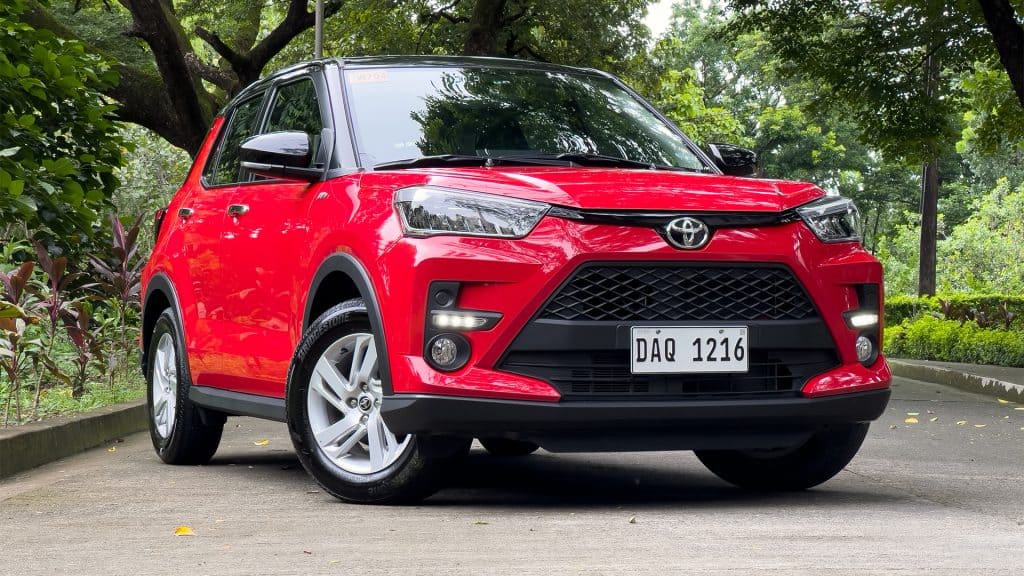
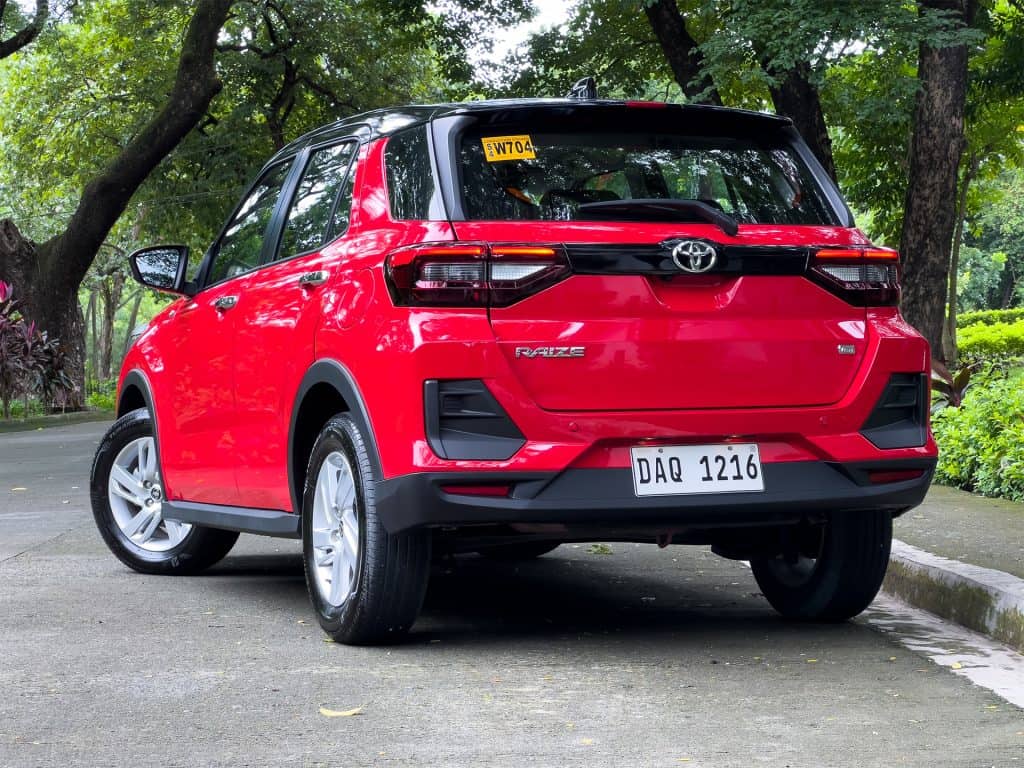
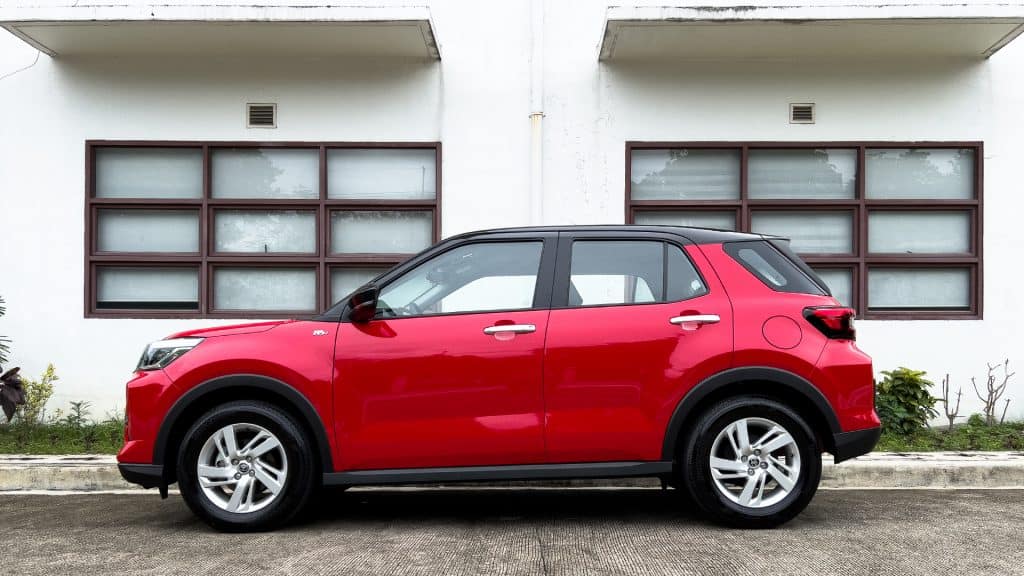
Where this G variant shines though is in the amenities as it shares a lot of appointments with the more expensive turbo variant. LED headlights, DRL, taillights, sequential turn signal that looks so good, and the power folding mirrors are all shared between the two. It also extends to the cabin as this G trim has 7-inch digital gauge cluster, smart entry system, automatic climate control, and 6 speakers.
Speaking of cabin, I had my reservations on the interior since this is a Daihatsu, rebadged as a Toyota – same with the Wigo and Rush that have less than acceptable cabin feel. However, this Raize is on a new platform and features a significant upgrade in materials for the interior. There’s a play on textures from the dashboard to the center console and door panels. They’re not rough or hollow anymore and feel better than what’s found in the Vios.
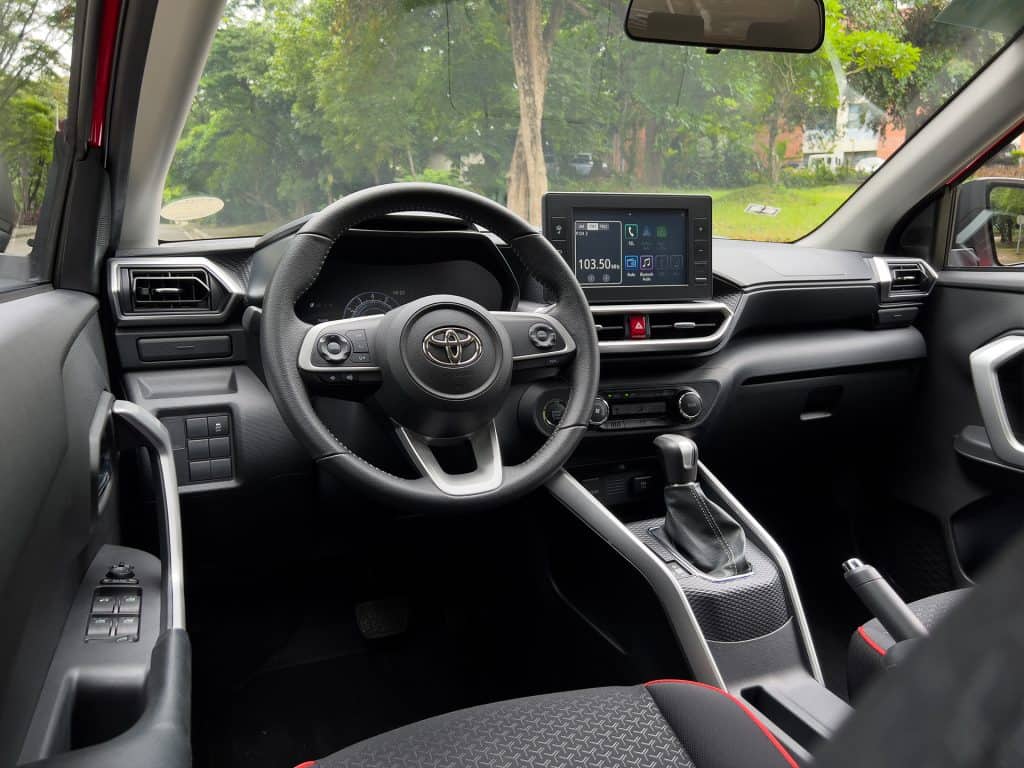
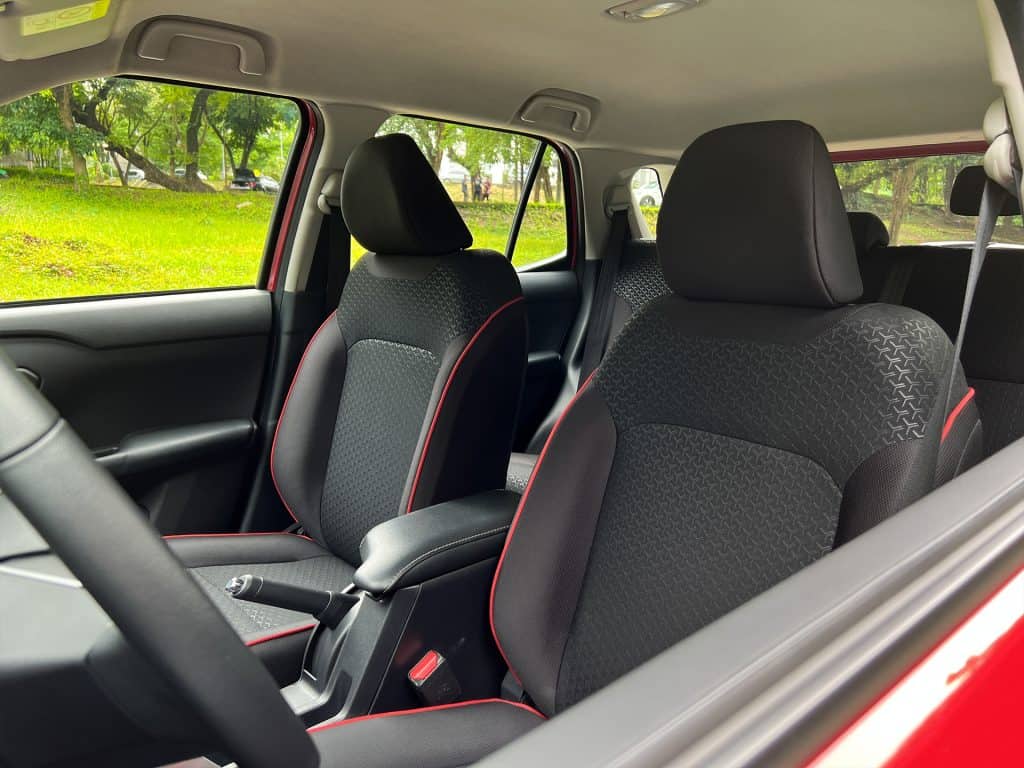
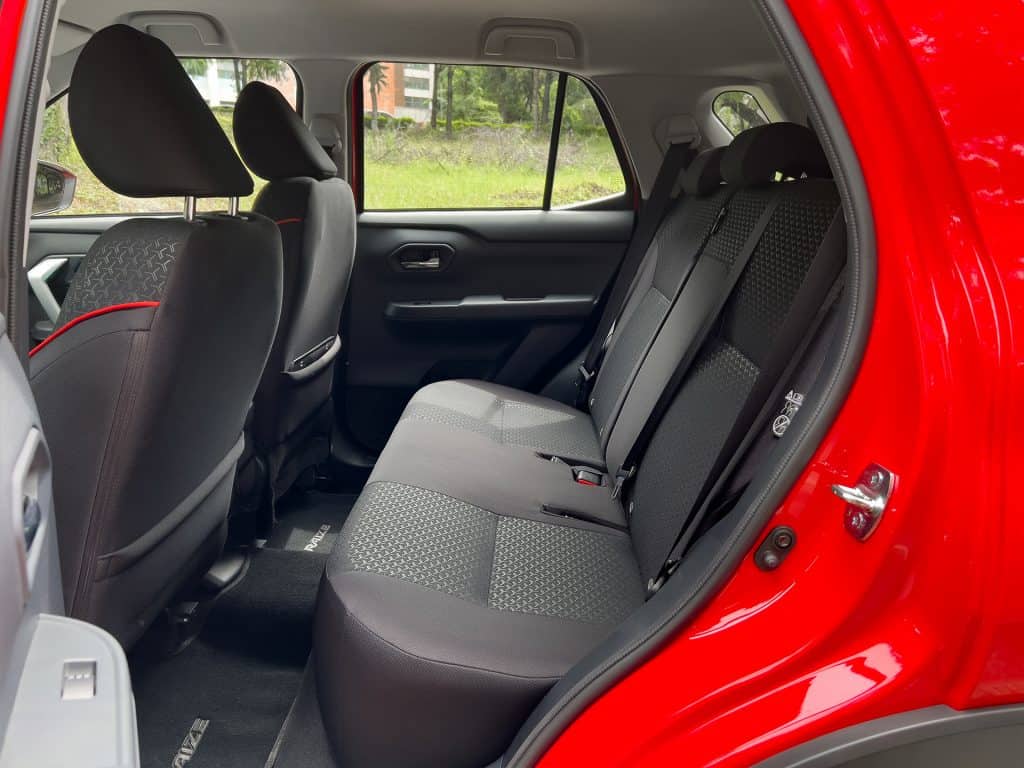
Space is also abundant. It has that magic ‘small outside, spacious inside’ appeal that made smaller cars more appealing. Even a wide man like me doesn’t have a problem in both the front row and backseat. Going in and out is easy and room for the average sized Filipino is more than enough. Of course, taller drivers mean having less space for those behind them but that’s for the passengers to settle amongst themselves.
What I like best about the Raize’s interior is its highly customizable digital gauge cluster and thoughtful allocation of space for your amenities. The cup holder was placed under the side air vents on the dashboard, the center console is higher allowing for cubby holes on the sides, the handbrake is also higher and now has space for parking cards underneath, and Toyota was able to squeeze in a center armrest on the front row! There are only two downsides for me in the Raize. First is the USB port for the smartphone capability since it’s in the corner of the touchscreen housing itself and not somewhere more discreet. Second would be the soft tonneau cover for the cargo area but that’s me finding faults in a very pleasant cabin.
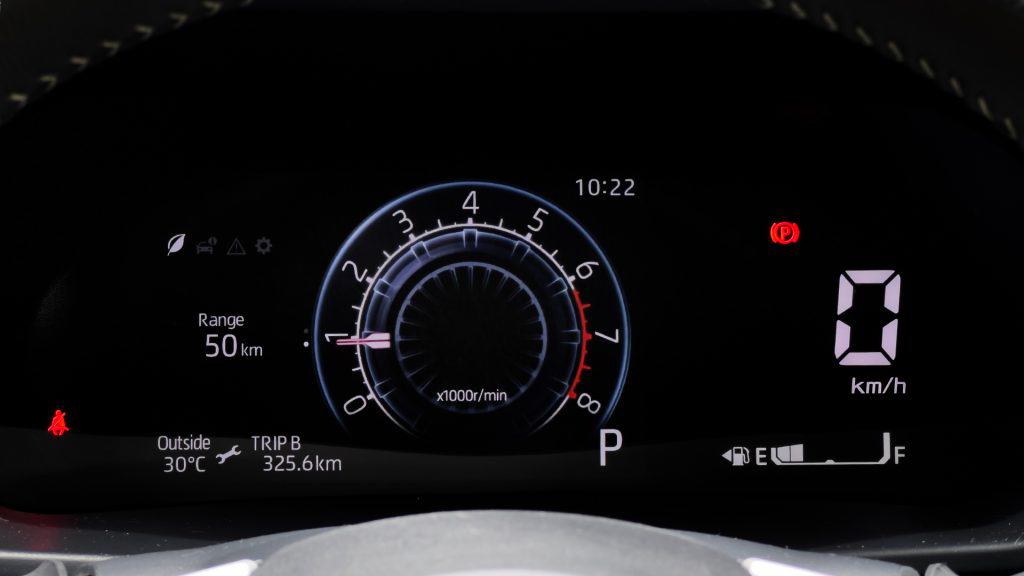
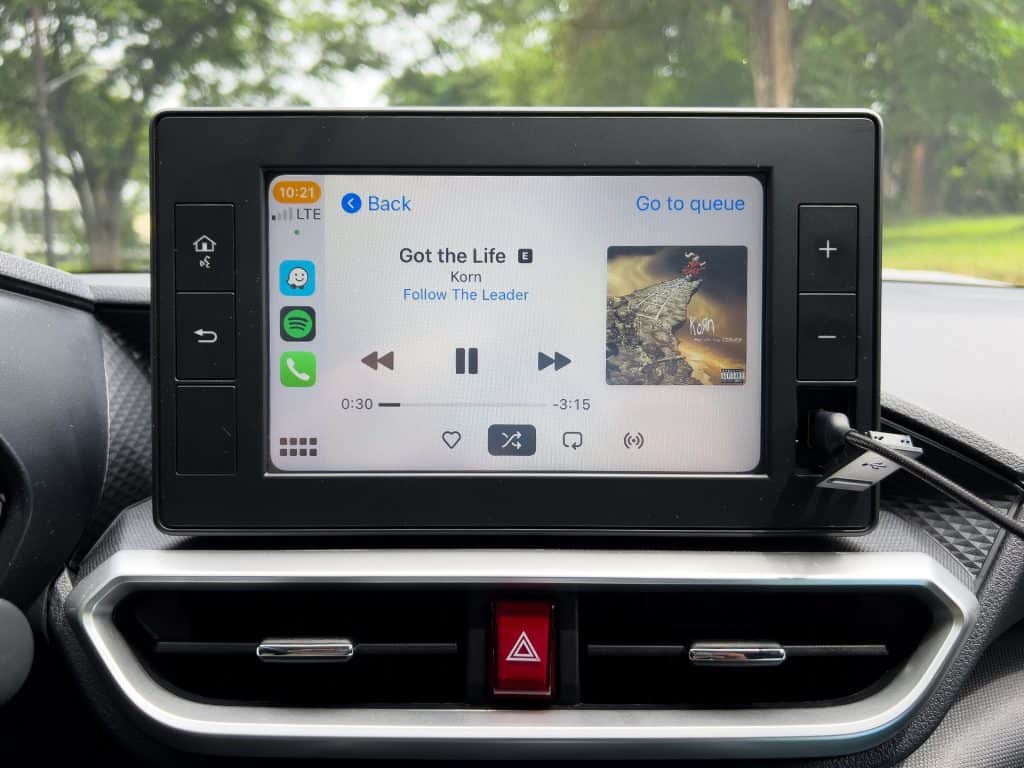
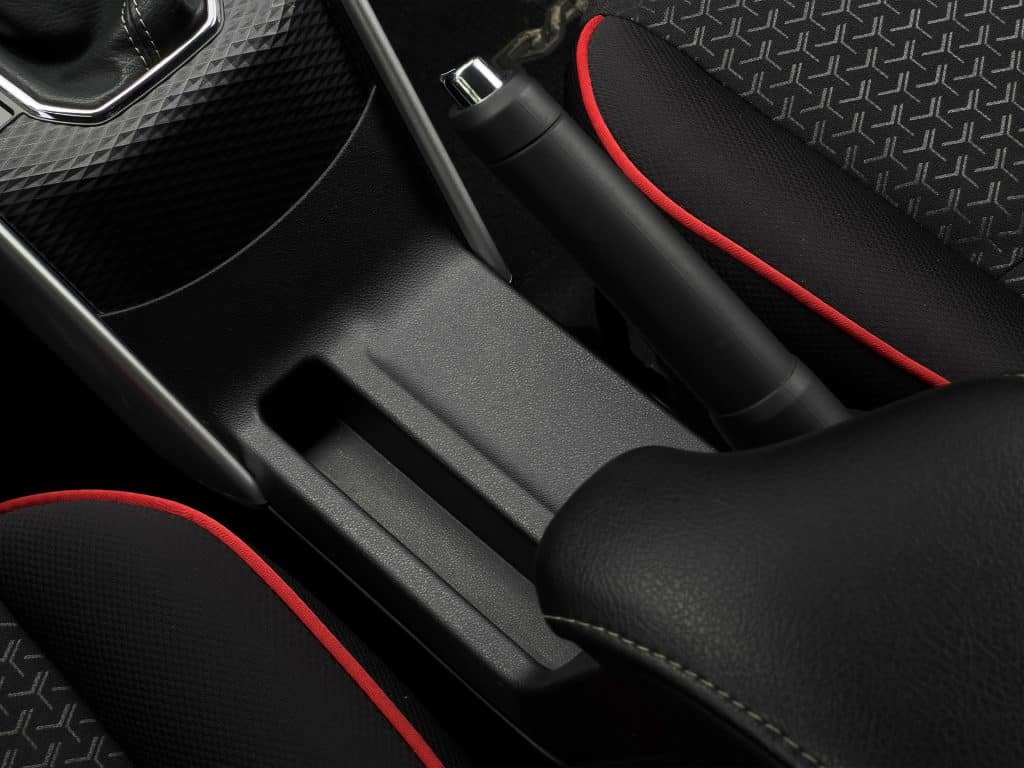
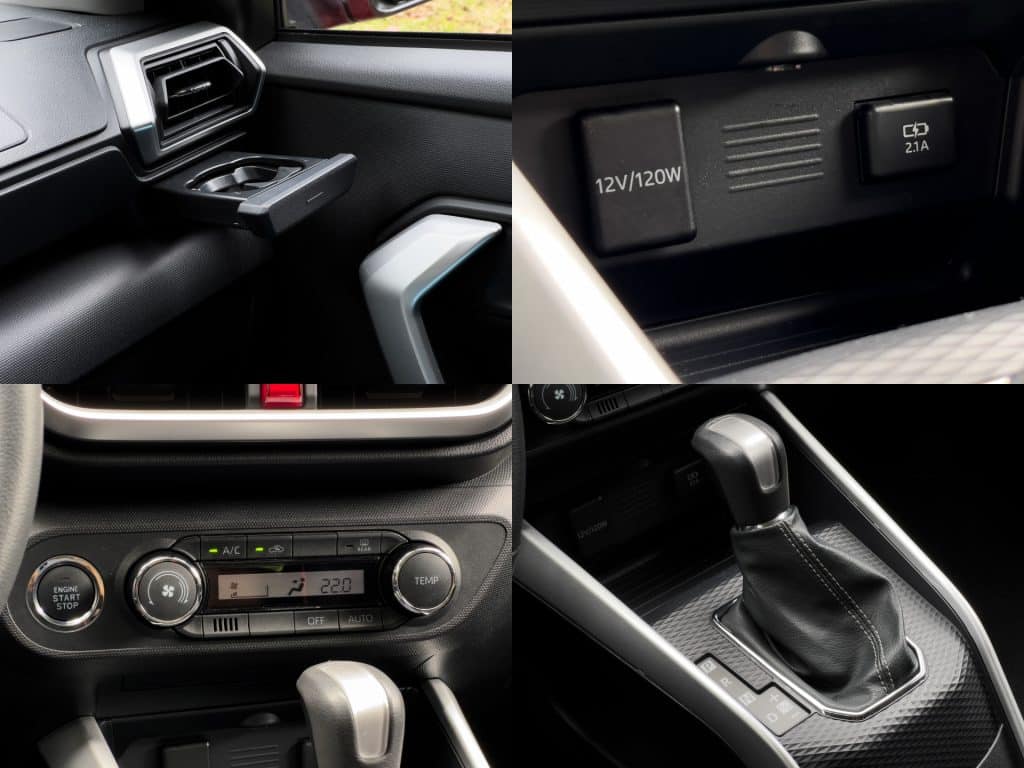
Liking the Raize becomes inevitable once you’re out on the road. Having 200mm of ground clearance is a big plus in a city hounded by tall humps and bad roads. The cabin is insulated well against outside noise, the ride comfort leans towards stiffness but still comfortable for most road imperfections, and the steering is light but stable on the highway.
Some will say the Raize isn’t mechanically impressive on paper. There’s a 1.2-liter engine that ‘only’ makes 87 horsepower, 113 Nm of torque, and paired to a CVT. Boring right? But you’ll be surprised how quick it is from a stop once you’re in the driver’s seat. They were able to tune the transmission so that it’s responsive and minimizes the rubber band effect that’s apparent in most CVTs. Overtaking still needs a bit more momentum but it’s easier here.
Despite this more eager approach, the Raize is stellar in its fuel efficiency. In the city it clocked in around 13 km/l with mixed traffic and not so traffic city roads. On the highway is where the Raize truly made a statement returning 26.8 km/l at 85kph. It’s even better than my best number on a Toyota Wigo or Suzuki Celerio – smaller hatchbacks with a supposed to be more fuel efficient engine.
Safety features are also well rounded as it comes with front airbags, stability control, hill-start assist, rear camera with line guide, and rear sensors. These are adequate enough for me in my daily drive, especially since we’re talking about a crossover under a million pesos.
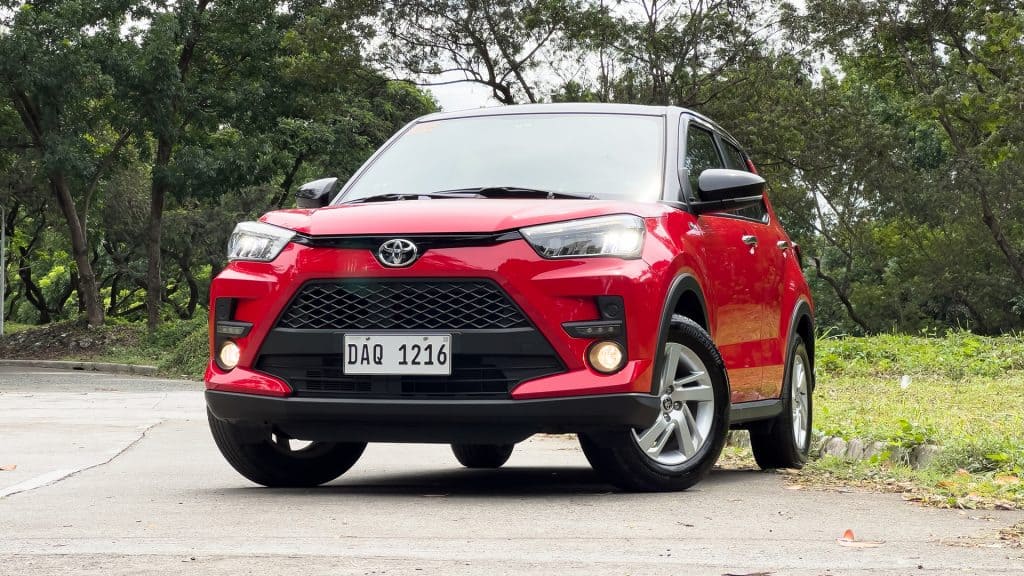
For P926,000, the Toyota Raize G is a disruptor even in Toyota’s own lineup. It has the perfect mix of good looks, high functionality in the exterior and cabin, easy to drive, capped off by great fuel efficiency. Its higher ground clearance and similar price point is a direct threat to the Toyota Vios that I won’t be surprised if it overtakes that sedan as the brand and country’s best-selling car.

